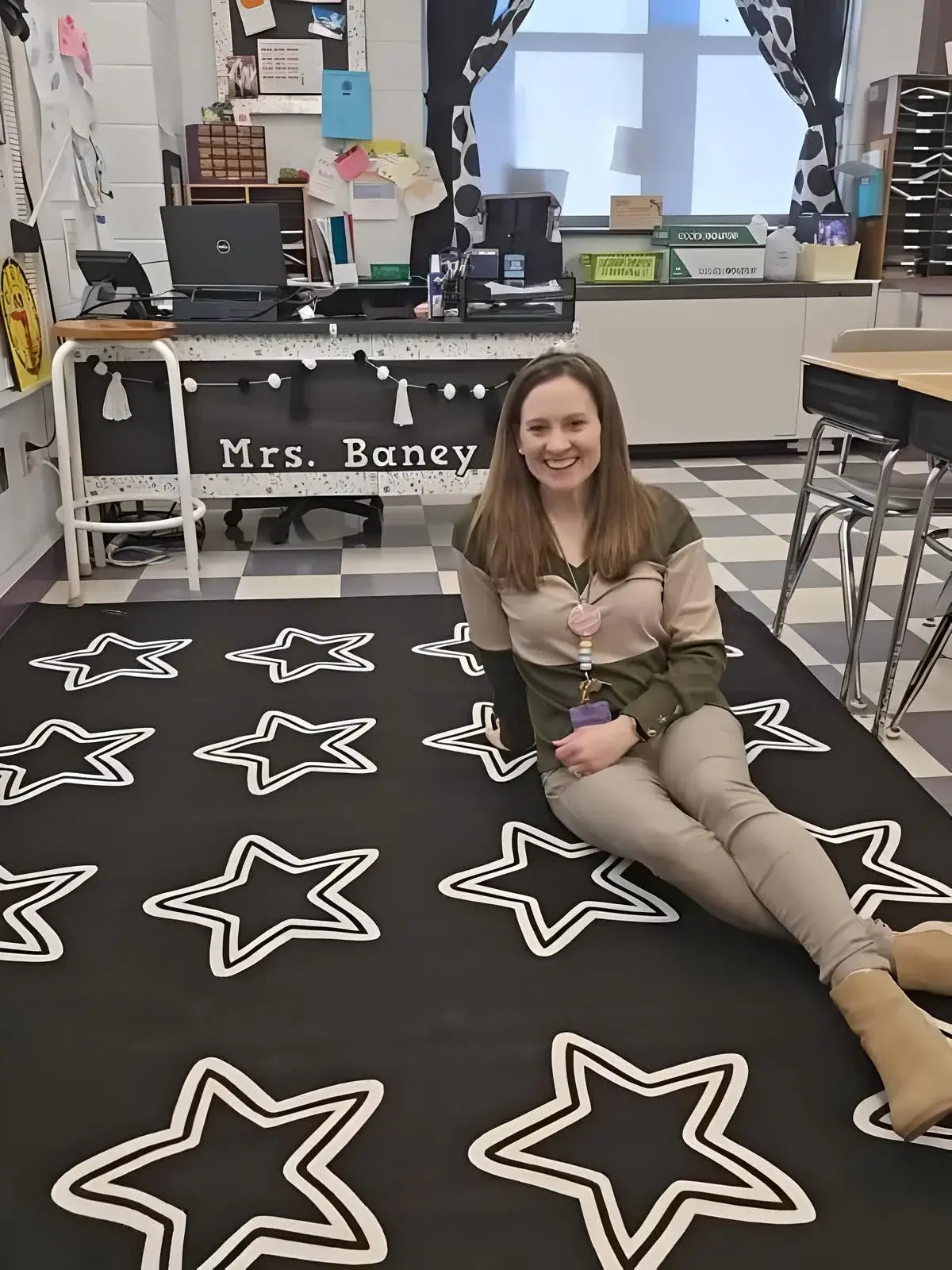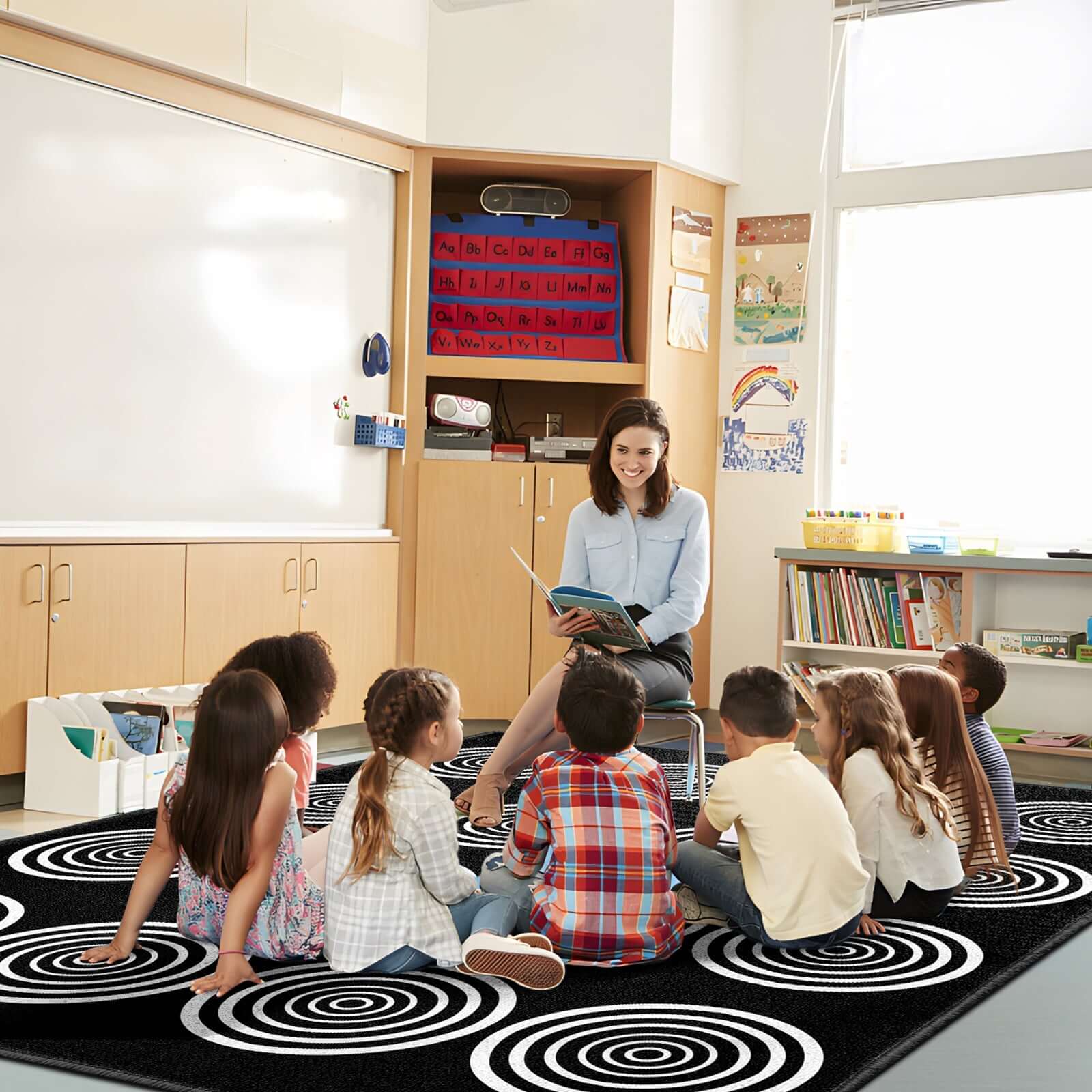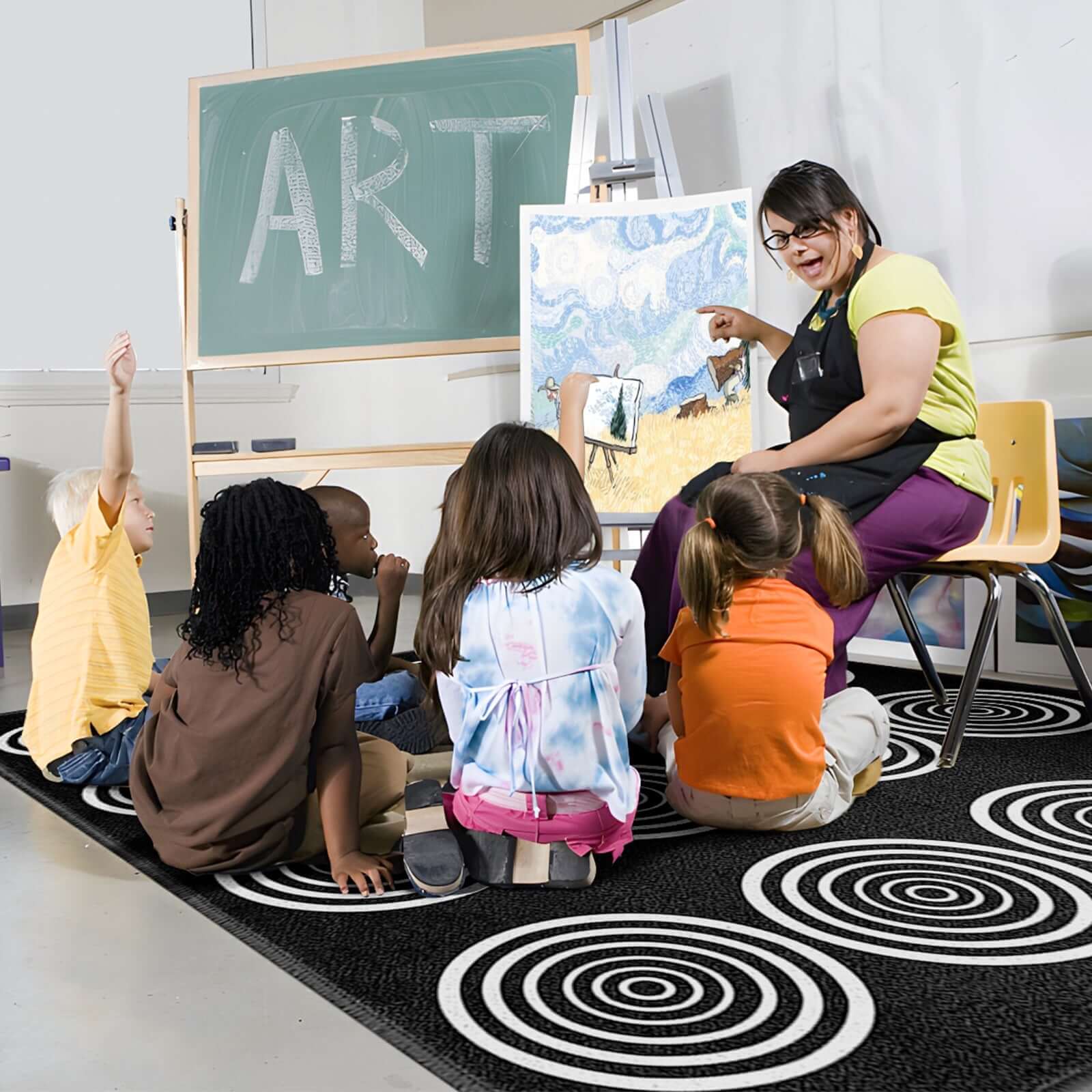Understanding Universal Design for Learning in Practice
Universal Design for Learning (UDL) is an educational framework that aims to make learning accessible to students with a wide range of needs and abilities.
By focusing on making spaces, content and learning activities accessible to those with disabilities, UDL can benefit all learners, including those without disabilities.
The framework operates on three core principles that directly influence classroom environment design:
- Multiple means of engagement to sustain motivation and interest
- Multiple means of representation to accommodate different processing styles
- Multiple means of action and expression to support diverse learning demonstrations
The Role of Physical Environment in Inclusive Education
When you use UDL, you assume that barriers to learning are in the design of the environment, not in the student.
This fundamental shift in perspective transforms how educators approach classroom design, moving from retrofitting spaces for individual needs to proactively creating environments that work for everyone.
Classroom rugs, as foundational elements of learning spaces, must support this inclusive design philosophy.
Designing for Neurodiversity and Sensory Needs
Supporting Sensory Processing Differences
Creating a calming room or calming space within a room can help children when they in a state of sensory overwhelm.
Effective inclusive rugs must consider the full spectrum of sensory processing needs present in modern classrooms:
For Sensory-Seeking Students:
- Textured surfaces that provide appropriate tactile feedback
- Varied materials offering different sensory experiences
- Interactive elements that support self-regulation
- Durable construction to withstand increased physical interaction
For Sensory-Sensitive Students:
- Soft, non-irritating fibers that feel comfortable against skin
- Muted color palettes that avoid overstimulation
- Consistent textures without unexpected variations
- Reduced visual complexity in patterns and designs
Creating Calm-Down and Regulation Spaces
Students with sensory processing disorders benefit from dedicated spaces that support emotional regulation. Inclusive classroom rugs can define these areas through:
- Visual boundaries that clearly delineate quiet zones
- Comfortable surfaces suitable for various regulation positions
- Neutral designs that promote calm rather than excitement
- Strategic placement away from high-traffic areas
- Size appropriateness for individual or small group use
Accessibility Features for Physical Disabilities
Mobility and Navigation Considerations
Mobility does not simply involve access between the student's desk and the door to the classroom. Inclusive rug design must accommodate various mobility devices and physical needs:
Wheelchair and Walker Accessibility:
- Low-profile edges that don't create tripping hazards
- Firm, stable surfaces that support mobility devices
- Strategic sizing that doesn't obstruct pathways
- Non-slip backing to prevent shifting under equipment
- Easy-to-clean materials for hygiene maintenance
Pathway Planning:
- Clear sight lines for navigation assistance
- Consistent placement that students can memorize
- Adequate spacing around rug perimeters
- Visual contrast with surrounding flooring
- Emergency egress consideration in placement
Supporting Fine and Gross Motor Development
The textures, colors, and designs of classroom rugs offer sensory stimulation that helps with cognitive development and encourages kids to explore their surroundings.
For students with motor challenges, rugs should provide:
- Stable seating surfaces for students with balance difficulties
- Supportive positioning for various physical needs
- Easy transition from standing to floor seating
- Comfortable cushioning for extended sitting periods
- Appropriate sizing for different body positions
Cognitive and Learning Support Features
Visual Processing and Organization
Many students benefit from visual organization tools that help them understand spatial relationships and expectations. Inclusive rugs can support cognitive processing through:
Clear Visual Structure:
- Defined seating areas that reduce decision-making fatigue
- Logical organization that supports understanding
- Consistent visual cues across different activities
- Appropriate complexity for cognitive load management
- Color coding that aids memory and organization
Information Processing Support:
- Minimal visual clutter that reduces distractions
- High contrast elements for visual clarity
- Predictable patterns that support routine establishment
- Size appropriate text and images for various visual needs
Supporting Executive Function Development
Executive function challenges affect many students across different disability categories. Inclusive rugs support these skills by providing:
- Environmental structure that reduces planning demands
- Visual reminders embedded in design elements
- Consistent expectations through familiar layouts
- Transition support between different activities
- Self-monitoring tools through visual feedback
Cultural Responsiveness and Representation
Creating Welcoming Spaces for Diverse Families
Often, teachers only consider the needs of students in their class, but many important classroom guests may also have physical mobility requirements.
Parents with disabilities have as much right as any other parent to access the classroom. Inclusive design considers the broader community:
Family Engagement:
- Culturally responsive designs that reflect student backgrounds
- Multilingual elements when appropriate
- Diverse representation in imagery and themes
- Accessible information about rug features and purposes
- Community input in selection processes
Supporting English Language Learners
Inclusive classroom rugs can support language development through:
- Visual vocabulary support embedded in designs
- Cultural bridge elements that connect home and school
- Reduced language barriers through visual organization
- Multilingual labeling where appropriate
- Universal design symbols that transcend language differences
Implementation Strategies for Inclusive Environments
Assessment and Planning
Creating inclusive learning experiences is essential and requires systematic evaluation of current spaces and intentional planning for improvements:
Environment Evaluation:
- Accessibility audit of current rug placement and features
- Student needs assessment across all learners
- Family input gathering on accommodation needs
- Teacher reflection on usage patterns and barriers
- Professional consultation with specialists when needed
Professional Development and Training
Implementing UDL principles effectively requires ongoing professional development focused on:
- Disability awareness and respectful language use
- Universal design principles in educational contexts
- Classroom management strategies for diverse learners
- Assessment techniques that accommodate different needs
- Collaboration skills with specialists and families
Technology Integration and Adaptive Features
Assistive Technology Compatibility
Assistive technology (AT) is a pedagogical approach that can be used to enforce universal design for learning (UDL) in the inclusive classroom. Modern inclusive rugs should accommodate various assistive technologies:
Device Compatibility:
- Stable surfaces for communication devices
- Cord management consideration for powered equipment
- Space allocation for various assistive devices
- Easy cleaning around technology areas
- Flexible arrangements as technology needs change
Digital Integration Possibilities
Some educators are finding innovative ways to integrate technology with traditional classroom elements, using smart rugs equipped with sensors or interactive elements to enhance learning while maintaining inclusive design principles.
Maintenance and Sustainability
Inclusive Maintenance Practices
Maintaining inclusive classroom environments requires consideration of various user needs:
Cleaning and Care:
- Hypoallergenic cleaning products and methods
- Accessible storage for maintenance supplies
- Student involvement in age-appropriate care tasks
- Predictable schedules that don't disrupt learning
- Quick response to spills and accidents
Environmental Considerations
Sustainable practices in inclusive design benefit both current and future learners:
- Durable materials that reduce replacement frequency
- Eco-friendly production methods and materials
- Local sourcing when possible to reduce environmental impact
- End-of-life planning for responsible disposal
- Health-conscious material selection for air quality
Assessment and Continuous Improvement
Measuring Inclusive Design Effectiveness
The ultimate goal of UDL is for all learners to become "expert learners" who are purposeful and motivated, resourceful and knowledgeable, and strategic and goal-directed about learning. Effective inclusive rug implementation should demonstrate:
Observable Outcomes:
- Increased participation from all students
- Reduced behavioral disruptions related to environmental factors
- Improved self-regulation during floor-based activities
- Enhanced peer interaction across diverse abilities
- Greater independence in space utilization
Feedback and Adaptation Systems
Continuous improvement requires systematic feedback collection:
- Student voice in design evaluation and modification
- Family input on accessibility and comfort
- Teacher observation of usage patterns and challenges
- Specialist consultation for ongoing assessment
- Regular review of emerging needs and solutions
Research and Evidence Base
Supporting Research for Inclusive Design
For comprehensive research supporting Universal Design for Learning principles and inclusive classroom design, educators can explore extensive resources available through the Center for Applied Special Technology (CAST), which pioneered the UDL framework and continues to advance evidence-based inclusive education practices.
Future Directions in Inclusive Design
As understanding of neurodiversity and inclusive education evolves, classroom rug design continues to advance:
- Evidence-based features informed by ongoing research
- Customizable elements that adapt to changing needs
- Modular systems supporting flexible arrangements
- Smart materials that respond to environmental conditions
- Universal symbols for cross-cultural accessibility
Professional Development and Community Building
Building Inclusive Teaching Capacity
Creating inclusive classrooms requires ongoing learning and community support:
Professional Learning Communities:
- Peer collaboration on inclusive design strategies
- Resource sharing across classrooms and schools
- Problem-solving for unique accommodation needs
- Success celebration and challenge navigation
- Continuous learning about emerging best practices
Family and Community Engagement
Inclusive education extends beyond classroom walls:
- Family education about UDL principles and implementation
- Community partnerships for diverse perspective inclusion
- Special education services coordination for comprehensive support
- Advocacy development for systemic inclusive practices
- Resource development for home-school consistency
Conclusion: Building Equitable Learning Foundations
The implementation of inclusive classroom design through thoughtful rug selection represents a fundamental commitment to educational equity and student success.
By applying Universal Design for Learning principles to environmental design, educators create spaces where all students can access learning opportunities without unnecessary barriers or stigmatization.
Research consistently demonstrates that inclusive environments benefit not only students with identified disabilities but all learners, creating more engaging, flexible, and responsive educational experiences.
When classroom rugs are selected and implemented with inclusive design principles, they become powerful tools for supporting diverse learning needs while building classroom community and belonging.
The journey toward truly inclusive education requires ongoing commitment, professional development, and community collaboration.
However, the investment in inclusive design pays immeasurable dividends in student success, self-advocacy development, and the creation of learning communities that value and support every member.
As educators continue to embrace the principles of Universal Design for Learning, the thoughtful selection and implementation of inclusive classroom rugs serves as both a practical necessity and a visible commitment to creating educational environments where every student can thrive.
Through careful attention to accessibility, sensory needs, cultural responsiveness, and learning diversity, classroom rugs become foundational elements in building the equitable, inclusive educational experiences that all students deserve.




Leave a comment
This site is protected by hCaptcha and the hCaptcha Privacy Policy and Terms of Service apply.